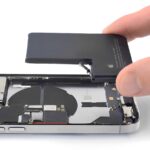In a world where technology evolves at lightning speed, we often find ourselves grappling with devices that seem designed to expire the moment their batteries do. Non-replaceable batteries, a common feature in many modern gadgets, present a unique set of challenges and frustrations. Let’s delve into the world of non-replaceable batteries and explore how to navigate this seemingly unchangeable reality.
Key Takeaway:
- Non-replaceable batteries can be a source of frustration due to limited lifespan and difficulty of replacement. Understanding their implications and exploring alternatives can help mitigate these challenges.
The Rise of Non-Replaceable Batteries
With the quest for sleeker designs and increased device integration, many manufacturers have opted for non-replaceable batteries in their products. These batteries are often soldered or glued into place, making them inaccessible to the average consumer. While this approach may streamline manufacturing and design, it comes at a cost to consumers in terms of repairability and longevity.
Limited Lifespan
One of the primary concerns with non-replaceable batteries is their limited lifespan. Over time, batteries degrade and lose their ability to hold a charge, eventually rendering the device unusable. Unlike devices with replaceable batteries, where you can simply swap out the old battery for a new one, devices with non-replaceable batteries require more complex and costly repairs, if repair is even possible.
Environmental Impact
The environmental implications of non-replaceable batteries are also significant. When a device with a non-replaceable battery reaches the end of its life, the entire device often ends up in the landfill, contributing to electronic waste (e-waste) pollution. This not only harms the environment but also wastes valuable resources.
Exploring Alternatives
While non-replaceable batteries may seem like an insurmountable obstacle, there are steps you can take to mitigate their drawbacks:
| Option | Description |
|---|---|
| Extended Warranty | Consider purchasing an extended warranty or protection plan that covers battery replacement. |
| Professional Repair | If your device’s battery fails, seek out professional repair services that specialize in battery replacement. |
| DIY Repair | For the adventurous DIY enthusiast, some devices can be opened and repaired with the right tools and guides. |
| Environmental Awareness | Support companies that prioritize sustainability and offer repairable, modular, or easily recyclable products. |
Real-Life Examples
- Smartphones: Many modern smartphones, including some models from Apple and Samsung, feature non-replaceable batteries, leading to frustration when battery performance deteriorates over time.
- Laptops: Some laptops, such as certain models of the MacBook Air, have batteries that are glued into place, making DIY replacement virtually impossible.
Final Thoughts
While non-replaceable batteries may be here to stay for the foreseeable future, it’s essential to be aware of their implications and explore alternatives where possible. By understanding your options and advocating for more sustainable and repairable products, you can help shape a future where technology is both innovative and environmentally responsible. Don’t let non-replaceable batteries leave you powerless—empower yourself with knowledge and action.















